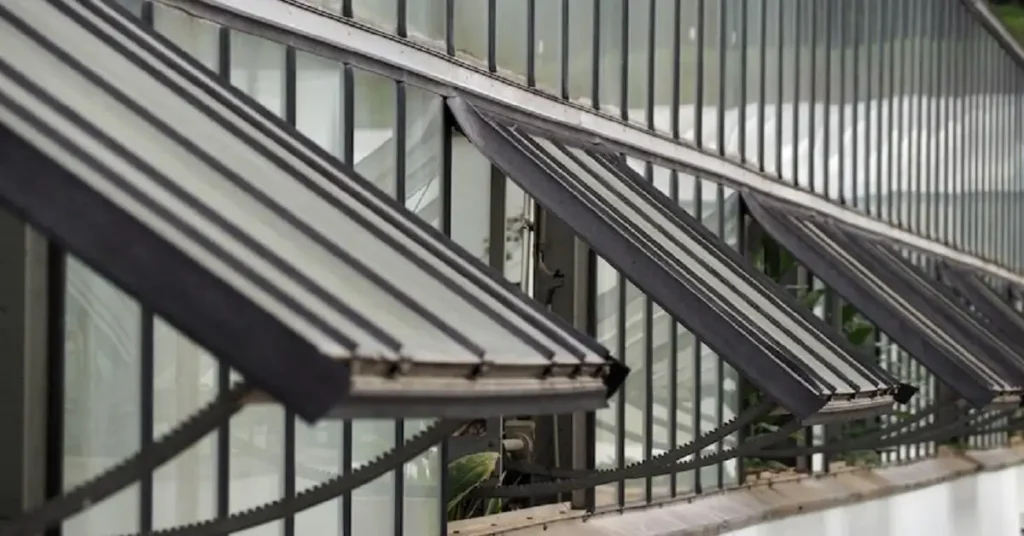In today’s architectural landscape, where both form and function carry equal importance, curtain wall systems have emerged as a vital solution for contemporary buildings. These non-load-bearing facades do more than just define the exterior aesthetics of a structure—they play a crucial role in energy efficiency, natural lighting, and overall building performance. Whether you’re an architect, a developer, or a business owner interested in commercial construction trends, understanding types of curtain wall systems is essential for making informed design and investment decisions.
As urban skylines evolve, the demand for advanced architectural glass systems like curtain walls, glass railings, and internal glass partitions continues to grow. Companies like MANNLEE are leading the way by offering innovative, customizable solutions that align with modern architectural needs. This article explores the functionality, benefits, and design versatility of curtain wall systems and highlights their rising importance in the global construction sector.
1. What is a Curtain Wall System?
A curtain wall system is an outer covering of a building that is non-structural. It is typically made of lightweight materials such as glass, aluminum, or steel and is attached to the structural frame of a building. Unlike traditional walls, curtain walls do not bear the load of the building; their primary function is to protect the interior from the elements while offering a sleek, modern aesthetic.
Curtain wall systems are typically used in commercial buildings, office towers, shopping malls, and luxury residential developments. Their ability to allow natural light, reduce thermal transfer, and provide noise insulation makes them an ideal choice for modern architecture.
2. Types of Curtain Wall Systems
There are two main categories of curtain wall systems: stick systems and unitized systems. Each type has its own set of advantages and ideal use cases depending on the project scale, location, and design requirements.
a. Stick Curtain Wall System
This is the more traditional method, where individual components (mullions, transoms, glass panels) are assembled on-site. It requires intensive labor and longer installation times, but it’s also more flexible, making it suitable for low- to mid-rise buildings or projects with custom design needs.
Advantages:
- Cost-effective for small-scale projects
- Easier to modify on-site
- Simple to transport and handle
b. Unitized Curtain Wall System
In this system, large units or panels are pre-assembled in a factory and then transported to the construction site for quick installation. This method is ideal for high-rise buildings where speed and consistency are critical.
Advantages:
- Faster installation
- Superior quality control
- Better weather performance
- Minimizes on-site labor
For a comprehensive understanding of different systems, manufacturers like provide detailed insights into the materials, features, and configurations of various curtain wall types, helping architects and engineers select the best fit for their projects.
3. Key Components of Curtain Walls
Regardless of the type, curtain wall systems generally include the following components:
- Mullions: Vertical framing members that support the panels
- Transoms: Horizontal framing members
- Vision Glass Panels: Transparent sections that allow natural light
- Spandrel Panels: Opaque panels that conceal structural elements or insulation
- Anchors and Gaskets: Components that fix the curtain wall to the building frame and ensure airtight sealing
Each of these parts plays a vital role in ensuring that the system performs well in terms of weather resistance, structural integrity, and thermal efficiency.
4. Benefits of Curtain Wall Systems
Curtain walls are not just visually impressive; they also offer practical advantages that enhance building performance, safety, and sustainability.
a. Enhanced Aesthetics
Curtain walls give buildings a sleek, futuristic appearance. The use of high-performance glass creates a smooth façade that reflects the sky, surroundings, or brand identity.
b. Natural Light Optimization
By maximizing glass coverage, curtain wall systems reduce the need for artificial lighting during the day, contributing to energy savings and a healthier work environment.
c. Improved Energy Efficiency
Modern curtain walls include double or triple-glazing, low-E coatings, and thermally broken frames to reduce heat transfer. This helps maintain comfortable indoor temperatures and reduces HVAC loads.
d. Weather Protection
Curtain walls protect buildings from rain, wind, and UV radiation. Proper sealing and drainage prevent moisture infiltration, which can damage interiors and compromise structural elements.
e. Noise Reduction
High-performance curtain walls act as sound barriers, making them ideal for buildings located near highways, airports, or dense urban centers.
f. Structural Safety
Though non-load-bearing, curtain walls can provide additional resistance to wind loads, seismic activity, and external pressures. Unitized systems, in particular, offer high strength-to-weight ratios.
5. Customization and Design Flexibility
One of the most compelling features of curtain wall systems is their adaptability. Whether you’re designing a minimalist office building or a complex, multi-faceted skyscraper, curtain walls can be customized in terms of:
- Panel size and shape
- Glass type (clear, tinted, reflective, frosted)
- Frame finishes (anodized, powder-coated)
- Operable windows or louvers for ventilation
- Integration with solar panels or shading devices
Manufacturers like MANNLEE work closely with architects and developers to provide tailored solutions that align with both aesthetic goals and technical requirements.
6. Installation Considerations
Choosing the right curtain wall system involves more than aesthetics. Factors to consider include:
- Building Height: Taller buildings often benefit from unitized systems due to wind loads and installation speed.
- Location & Climate: Areas with heavy rainfall or strong winds require enhanced waterproofing and anchoring.
- Budget: Stick systems may be more cost-effective for smaller projects, while unitized systems save time and money on large-scale developments.
- Maintenance: Glass curtain walls are easier to clean and maintain than traditional cladding materials, especially with modern hydrophobic coatings.
7. Sustainability and Green Building
With global emphasis on sustainability, curtain wall systems are becoming integral to green building practices. Many systems now include features that qualify for LEED certification:
- Thermal insulation: Reduces reliance on heating/cooling systems
- Solar control: Minimizes glare and solar heat gain
- Recyclable materials: Aluminum and glass can be reused
- Integration with green tech: Curtain walls can accommodate photovoltaic cells and smart glass technologies
Sustainable buildings not only reduce operational costs but also align with environmental regulations and boost brand reputation.
8. Real-World Applications
Curtain wall systems are used across a broad spectrum of industries and building types:
- Corporate Headquarters: For a strong, modern brand image
- Hotels and Resorts: To offer panoramic views and daylighting
- Airports and Transit Hubs: Enhancing openness and passenger experience
- Universities and Hospitals: Creating calm, naturally lit interiors
- Shopping Centers: Blending luxury with performance
From Dubai’s glittering skyline to eco-conscious offices in Scandinavia, curtain walls are helping define the architectural character of the 21st century.
Conclusion
The evolution of curtain wall systems represents the intersection of architecture, engineering, and environmental design. Their growing popularity among developers and architects is a testament to their ability to deliver value, beauty, and performance in equal measure. As urban landscapes grow more complex and sustainability becomes a mandate rather than a trend, curtain walls offer a versatile, future-proof solution.
Partnering with experienced providers like MANNLEE ensures not only high-quality materials but also the expertise needed to bring visionary architectural concepts to life. Whether you’re planning a commercial tower, a mixed-use facility, or a luxury residential complex, understanding and leveraging the full potential of curtain wall systems will give your project a competitive edge.



